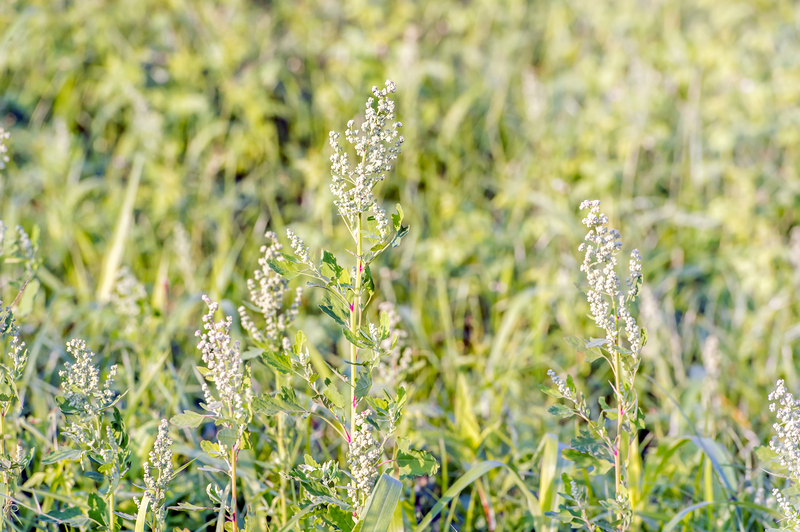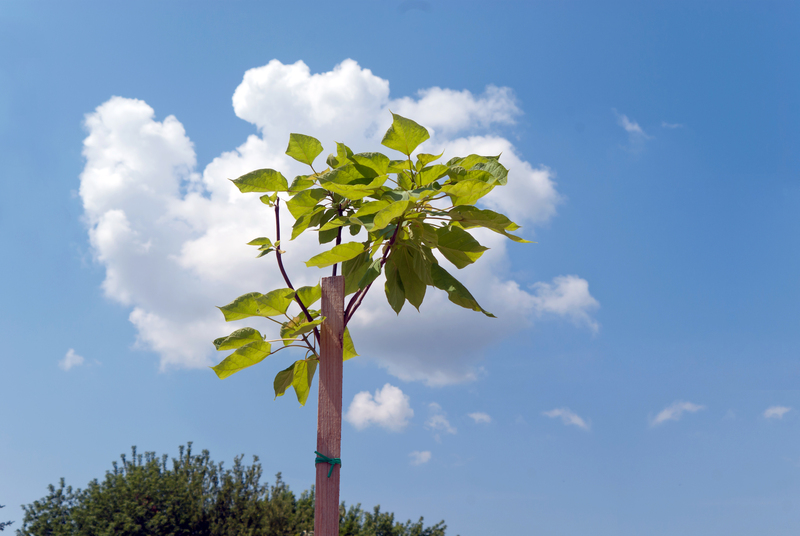Harnessing Nature: Grow an Herb Garden
Posted on 03/06/2025
Harnessing Nature: Grow an Herb Garden
Imagine stepping outside and snipping fresh basil for your pasta or mint leaves for your tea, all from your very own garden. Cultivating an herb garden is one of the most rewarding, sustainable, and health-conscious hobbies you can embrace. Not only does it provide endless flavor for your dishes, but growing your own herbs also connects you with the rhythms of nature. In this comprehensive guide, we'll walk you through how to grow an herb garden, from choosing the perfect varieties to harvesting and preserving your aromatic bounty.

Why Start Your Own Herb Garden?
- Freshness and flavor: Homegrown herbs are far more flavorful and aromatic than their store-bought counterparts, and you can harvest just what you need, reducing waste.
- Cost-effective: A small investment in seeds or seedlings pays off with a continuous supply of your favorite herbs all season long.
- Health and wellness: Herbs are rich in antioxidants and nutrients. With your own organic herb garden, you'll avoid the pesticides and preservatives sometimes present in commercial produce.
- Sustainable living: Growing herbs at home reduces your carbon footprint and reliance on store packaging.
- Natural beauty: Many herbs offer lush foliage, delicate flowers, and enchanting scents, adding both utility and beauty to your living space.
Choosing the Best Spot to Plant Your Herb Garden
Location is everything when it comes to cultivating a thriving herb garden. Whether you're planting outdoors in raised beds, traditional garden plots, or using containers on a sunny balcony, herbs need the right conditions for optimal growth.
- Sunlight: Most herbs thrive when they receive at least 6-8 hours of direct sunlight daily. Observe your chosen location and ensure it gets adequate morning or afternoon sun.
- Soil: Herbs prefer well-draining, fertile soil. If your native soil is heavy or clay-based, amend it with compost or organic matter to improve drainage.
- Accessibility: Place your herb garden close to your kitchen or dining area for quick harvests, especially if you love adding fresh herbs to your meals.
- Protection: Herbs benefit from a spot shielded from strong winds, which can dry out or damage delicate leaves.
Selecting Your Herb Garden Favorites
There's an herb to suit every palate and dish. To harness nature's bounty, consider planting a mix of annuals and perennials:
- Basil: The star of summer gardens, perfect for Italian dishes, pestos, and salads.
- Mint: Exceptionally vigorous, ideal for teas and desserts. Plant in containers to prevent spreading.
- Rosemary: Woody and aromatic, suited for roasted meats and breads.
- Parsley: Versatile and vitamin-rich, used as both a garnish and main ingredient.
- Cilantro/Coriander: Fresh leaves for salsa, seeds for spice blends.
- Thyme: Hardy, low-growing, and essential in Mediterranean cuisine.
- Sage: Beautiful silvery leaves and earthy flavor, delicious in stuffing or roasted dishes.
- Oregano: Pizza's best friend, excellent in sauces and grilled vegetables.
Don't forget lesser-known options like chives, dill, tarragon, and lemon balm for additional flavors and pollinator appeal.
Starting Your Herb Garden: Seeds or Seedlings?
*Growing herbs from seeds* is budget-friendly and offers a wider variety, but it requires patience and attention. Buying seedlings from a local nursery provides a head-start and immediate gratification, especially for beginners.
- Direct sowing: Fast-growing herbs like basil, dill, and cilantro can be sown straight into your garden after the last frost.
- Transplants: Tender or slow-starting varieties such as rosemary and thyme do best when started indoors or bought as young plants.
How to Grow an Herb Garden Successfully
Planting Techniques
- Spacing: Herbs need room to breathe. Follow the spacing guidance on seed packets or plant tags--generally 6-12 inches apart, depending on the variety.
- Soil preparation: Mix in organic matter like compost to nourish your plants.
- Watering: Most herbs prefer slightly moist soil but object to soggy roots. Water at the base and allow the soil surface to dry slightly between waterings.
- Mulching: Applying a thin layer of mulch around your herbs conserves moisture, suppresses weeds, and adds nutrients as it breaks down.
Tip: Label your herbs as you plant--they can look similar when young!
Container Gardening with Herbs
Don't have garden space? You can still harness the power of nature and grow an indoor herb garden! Containers are perfect for windowsills, balconies, or patios.
- Choosing the right container: Ensure pots have drainage holes. Terracotta, ceramic, or recycled containers are all suitable.
- Soil: Use a high-quality organic potting mix designed for edibles.
- Location: Place containers in the sunniest spot possible; south-facing windows are ideal indoors.
- Combination planting: Group herbs with similar water and light needs (e.g., rosemary, thyme, and oregano together).
- Watering: Potted herbs dry out more quickly--check soil moisture daily in hot weather.
Care and Maintenance Tips for Your Herb Garden
- Pruning: Regularly pinch back growing tips to encourage bushy growth and prevent herbs from blooming too soon (bolting).
- Fertilizing: Feed lightly with a balanced, organic fertilizer every 4-6 weeks.
- Pest management: Keep an eye out for aphids and spider mites. Use insecticidal soap or companion planting (e.g., marigolds) to deter pests.
- Disease avoidance: Allow good air circulation and avoid wetting leaves to prevent mildew.
Harvesting Your Herbs: Timing is Everything
Harvesting your homegrown herbs is the highlight of your gardening journey. Picking leaves regularly not only stimulates new growth but also ensures you harvest herbs at their peak of flavor.
- Best time to harvest: Snip herbs in the morning after the dew has dried but before the heat of the day.
- Method: Pinch off no more than one-third of a plant at a time to keep it growing strong.
- Flowers: Most herbs lose flavor after flowering, so harvest leaves before buds open for the best taste.
Pro tip: Use clean, sharp scissors or garden snips to avoid damaging your herbs.
Preserving and Using Your Herb Garden Harvest
With a bountiful garden, you may find yourself with more herbs than you can immediately use. Luckily, there are several ways to preserve the flavors and aromas of your hard work:
- Drying: Hang sprigs upside down in a dry, well-ventilated area, or use a dehydrator. Once dry, crumble and store in airtight containers away from sunlight.
- Freezing: Chop herbs and freeze them in ice cube trays with a little water or olive oil. Perfect for adding directly to soups and stews.
- Infused oils and vinegars: Submerge fresh herbs in a carrier oil or vinegar for several weeks, strain, and enjoy as a flavorful addition to salads or marinades.
- Herb butters: Mix finely chopped herbs into softened butter, roll into a log, and chill. Slice off rounds as needed for flavorful spreads and cooking.
Cooking with Your Homegrown Herbs
One of the greatest joys of cultivating an herb garden is infusing your meals with fresh, vibrant flavors.
- Basil: Essential for Caprese salads, pesto, and tomato sauces.
- Parsley: Brightens soups, stews, and grain salads; great as a final flourish.
- Dill: Delicate and fragrant in potato salads, fish dishes, and pickles.
- Mint: Perfect for desserts, teas, and refreshing summer drinks.
- Sage: Rich and robust, perfect for roast poultry, squash, and brown butter sauces.
Herb Gardening for Every Space
Not everyone has access to a sprawling backyard, but you can grow an herb garden almost anywhere. Try these creative solutions if space is limited:
- Vertical gardens: Utilize wall-mounted planters or stacked pots to maximize vertical space on balconies or patios.
- Hanging baskets: Great for trailing herbs like thyme or oregano, perfect for sunny porches.
- Window boxes: Install boxes outdoors on sunny windows for easy access and a beautiful kitchen view.
- Hydroponic systems: Try compact, soil-free systems designed for indoor countertop gardening.
Solving Common Herb Gardening Challenges
Common Questions and Troubleshooting
- Why are my basil leaves turning yellow? This often indicates overwatering or poor drainage. Allow the soil to dry between waterings, and ensure your pots or beds drain well.
- How do I prevent pests naturally? Inspect plants regularly. Use strong water sprays, insecticidal soap, or plant pest-repelling herbs like chives and garlic among your garden rows.
- Can I grow herbs indoors year-round? Absolutely! With sufficient light--either from a south-facing window or supplemental LED grow lights--you can have an indoor herb garden, even in winter.
- What herbs grow best together? Group Mediterranean herbs (rosemary, sage, thyme, oregano, and lavender) for similar care. Keep thirsty herbs like basil and parsley together, and segregate invasive runners like mint in their own pots.

Creating a Sustainable and Beautiful Herb Garden
Beyond the utility of kitchen herbs, herb gardening is a deeply sustainable and aesthetic hobby. Here's how to boost the ecological impact and visual appeal of your garden:
- Attract pollinators: Flowering herbs like chives, lavender, and dill attract beneficial insects, improving overall garden health.
- Companion planting: Some herbs deter pests or benefit neighboring vegetables--basil with tomatoes, cilantro near carrots, and dill under cabbage.
- Edible landscaping: Use attractive herbs like purple basil, golden sage, and variegated thyme as ornamental features in mixed beds.
- Reduce waste: Compost herb stems and trimmings to enrich your soil and close the fertility loop.
Conclusion: Reap Nature's Rewards through Herb Gardening
Harnessing nature by starting an herb garden brings numerous benefits--from culinary delight to improved well-being and sustainability. Whether you're nurturing a sprawling outdoor plot, tending a compact urban container garden, or curating a selection of pots on your kitchen windowsill, the pleasures and rewards are countless. With a little care and curiosity, you can savor fresh herbs year-round, reduce your environmental impact, and rediscover the joy of gardening with each fragrant harvest.
Now is the perfect time to grow an herb garden and elevate your meals, home environment, and connection to the natural world. With these tips, you'll transform your space, your health, and your flavor palette--one leaf at a time.

